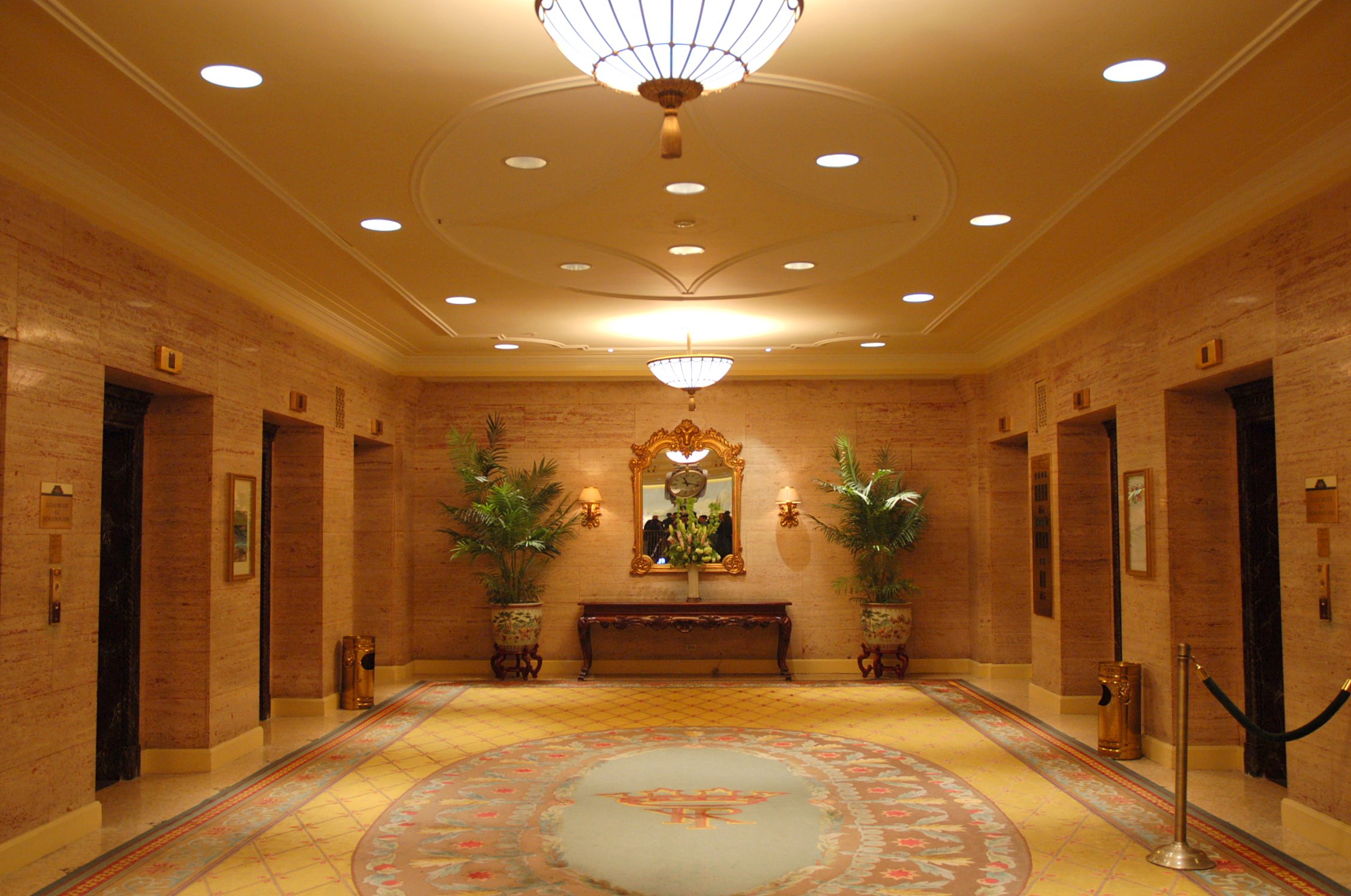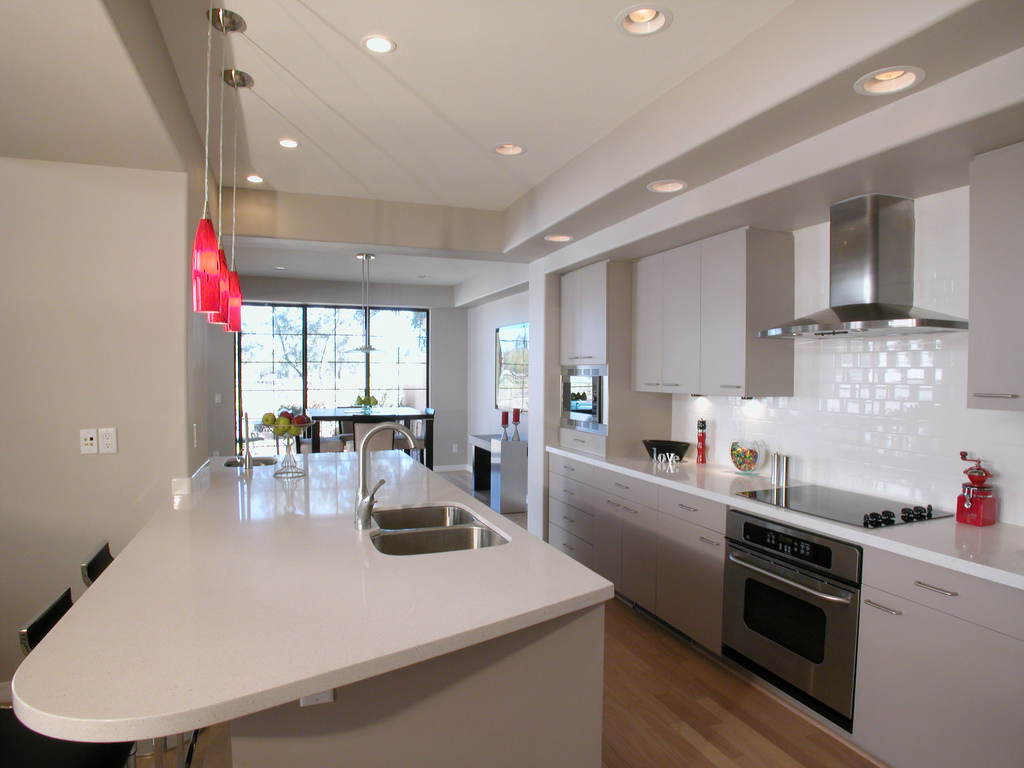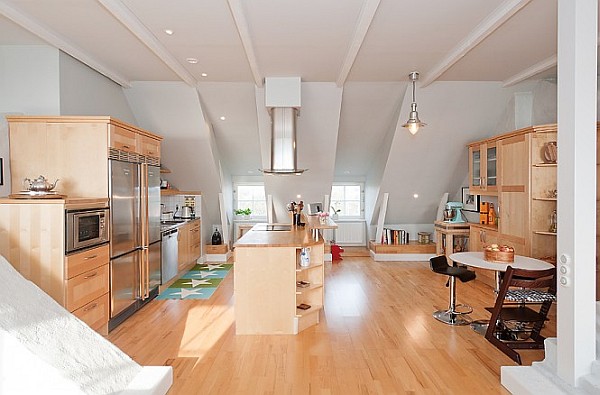RECESSED LIGHTS: A PRACTICAL GUIDE
Recessed lights, canned lights, recessed spots… whatever the term, recessed lighting is one of the most versatile and efficient lighting solutions available. They are discreet and perfectly suitable for ambient lighting, as well as for task or accent lighting. They are great for residential and commercial environments, and can be used to add depth to a space or to highlight interesting décor and architectural elements or even be used as outdoor recessed lights. However, even though recessed lights are very versatile, a good amount of planning is needed for a successful result. Considerations such as layout, installation, direction, color and others must be taken into account. This guide offers practical advice that will help you understand this technology and draft a lighting plan that truly reflects your needs.
AVANTAGES of CANNED LIGHTS:
• An excellent ambient light source • An elegant and modern choice that suits all types of décor • A solution that works well with high and low ceilings, and creates the impression of depth • A great way to highlight décor elements • A well planned recessed lighting plan allows for more freedom when choosing additional, accent lighting, since the overall lighting needs are covered

Canned spots are an elegant choice that fits well in all types of décor, from the most classical to futuristic ones. Photo : https://commons.wikimedia.org
PRO TIPS
Here are some considerations for choosing your recessed spots:
Technical considerations:
• Size – 3 and 5 inch spots are among the most popular choices, but, thanks to LED technology , more sizes are available. This includes 1 inch spots, which provide an super discreet source of light, for an invisible but efficient lighting. • Beam size – The beam size varies from one light to another. Make sure that you use the right beam size for every application: for example, when lighting work areas (kitchen island, kids homework desk) you will need a larger beam, while a smaller beam will be sufficient for lighting a piece of art or a commercial display. • IC rating – The insulation contact rating indicates if the spot can be in contact with the thermal insulation of the building. Spots that are not IC rated should be installed at least 3 inches away from any type of insulation. • IP rating – All light sources have an IP rating, which indicates their ability to be installed in a humid or dusty environment. For bathroom applications, an IP rating of at least X4 is needed. • Spacing – Once installed, it will be difficult to relocate recessed lights, so it is best to plan their spacing well. Think of all the areas that need to be covered: counters, kitchen islands, hallways or stairs. • Beam direction – Directional spots offer more flexibility and adapt well to future configuration changes. • Adjustable trims – Use adjustable trims for sloped ceilings or for ceilings that need to be washed.

Canned lights are particularly suitable for task lighting, as they provide an even, efficient ambient light and can be easily mixed with other types of lighting (hanging lights, under cabinet lighting, etc.). Photo : NancyHugoCKD.com
https://www.bestledz.com/media/recessed/imgpsh_fullsize3.jpg
Recessed spots are perfect for commercial applications where efficient and flexible lighting is needed in order to adapt to changing display configurations. Photo : commons.wikimedia.org
Style considerations:
• Finish – Several finished are available: antique, satin, polished, chrome, brushed or painted. • Dimmers – Adding dimmers will help adjust the light intensity and create different atmospheres for a given space. Even if this is not a priority when drafting your lighting plan, you will be happy to have included it, once you will be enjoying the dimmer feature. • Light color – This important factor can be chosen according to the available natural light and the function of the space to be lit. For example, warm lights are perfect for living rooms and bedrooms, while colder lights are suited for work areas, kitchens, offices and bathrooms.

A well thought out lighting plan provides great freedom in terms of accent lighting, since the ambient lighting is covered by canned lights. Photo : www.thespruce.com
CANNED LIGHTS APPLICATIONS
• WALLS : Use wall washer recessed lights to highlight a wall and reflect the light back into the room, for a soft lighting effect. For best results, place them 18 to 24 inches away from the wall, and make sure they are not pointed at the floor. • ACCENTS: Use projector spots to highlight decorative items or architectural details. Make sure you use a 3:1 lighting ratio for accent lighting. Anything lower will not be enough to create the necessary contrast, while anything more (5:1, for example) will make the highlighted element ‘pop’ in a sleek, contemporary way. • STAIRCASES : install recessed spots at the bottom of the wall for a soft, brushing effect, or at the center of the stairs, for a more modern look. Canned lights will also add to the safety of your staircases, draw the eye along the stairs, for an elongated effect, and help highlight the beauty of staircase textures, be they wood, textiles or tiles.

Recessed spots are perfect for high, low and sloped ceilings. Any type of space, regardless of its size or height, can be lit efficiently and discretely by recessed lights. Photo: www.decoist.com
RECESSED LIGHTS – LIGHTING PLAN
In order to create a perfect lighting for your space, your lighting plan must address the following considerations:
1. Lumens
The lumens or light intensity of a recessed spot partially determines luminosity of your space. Light intensity depends on two factors: the usage of the area to be lit and the intended mood for that area. For example, for your home office, you will need a higher light intensity and a different atmosphere than for your bedroom.
2. Ceiling height
Your ceiling height plays an important role in determining the lumens amount of a particular light source. Higher ceilings need a higher light intensity in order to ensure the proper lighting for the entire area. Therefore, the first step in drafting your lighting plan is measuring your ceiling height.
3. Light quantity
The next step is calculating the amount of light needed. A few things need to be taken into consideration: what are the rooms that you would like to add recessed spots for? Obviously, bedrooms require less spots than living rooms or hallways, while kitchens and bathrooms require the most recessed lights. Obviously, the size of the space is a major factor in your calculations. Hence, the next step of your planning is measuring the length and width of the areas to be lit.
4. Spacing calculator
The distance between the wall and the first canned spot must be equal to half of the distance between spots. ADDITIONAL RESOURCES • Tips for original spaces using recessed lighting - https://www.decoist.com/recessed-ceiling-designs/ • Mixing recessed lighting and other types of lighting, for a successful result - https://www.thespruce.com/living-room-lighting-ideas-4134256
Have you found the answers to your questions in our guide?
DO YOU HAVE FURTHER QUESTIONS? NEED HELP
choosing the right recessed lighting for your project?
CONTACT US
Tel. : 1-888-571-5529
Email : [email protected]
Live chat on our website: www.lumenco.ca







